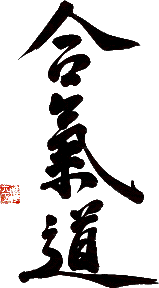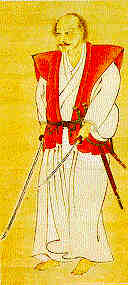
The Shodokan Aikido Dojo de Quebec

The Shodokan Aikido Dojo de Quebec
Aikido like Judo was derived from the ancient Jujitsu styles of Japan. Generally the emphasis of Aikido is on the Atemi (striking) and Kansetsu (joint) techniques whilst in the case of Judo the Nage (throwing) and Katame (grappling) techniques are emphasized. This results in a further division based on the space between opponents yet the basic principles, due to their historical origins and physical characteristics of the human body, remain the same. Although Karate is a later import from Okinawa many of the striking and blocking techniques have their parallels in Jujitsu also. Aikido grew mainly out of Daito Ryu Aikijujitsu and some say that the Aiki component makes these arts distinct from all the other jujitsu derived styles. How true this is and what Aiki really means I will leave to others except to say that one of the foundations of Judo (Kito Ryu) also has the concept. I recommend an article written by Fumiaki Shishida Shihan (Professor of Budo History, Waseda University) for an overview of Aikido and it's origins and also A Brief Look at the "Root Arts" of Judo (an interview of Steve Cunningham, 6th Dan Kodokan Judo).
 |
The kanji for Aikido (written top to bottom) can be translated as Harmonizing (Ai) Energy (Ki) Way (Do). The Do is taoist, a path toward enlightenment essentially achieved by overcoming your own ego whilst working hard, not by endless discussion. Although the Do suffix is relatively recent to many martial arts (Judo, Kendo, Aikido), many of the older schools (Koryu) placed as much emphasis on developing the human being rather then just training for war. Jigaro Kano, the founder of Judo, used the suffix since he had to find some way to differentiate what he was doing from the Jujitsu of the time. The latter had fallen into disrepute having, in many cases, become of vehicle for brawling. They had lost their way. Many of the other martial arts followed his lead using Do to signify the primacy of self-perfection over self-protection. In the dojos I studied at in Japan, the Do component is taken very seriously. However it is a path of self discovery with only the occasional tweak in the right direction by your Sensei.
The history of Aikido, it's stylistic variations, and it's relationship to Judo
and Daito Ryu are covered by various sources which can be reached by following
the links on this page.
Besides a bit of Judo as a kid, my first exposure to serious martial art training was Nippon Kempo which I studied at the School of Oriental and African Studies of the University of London. This art is a relatively new invention combining elements of Judo, Aikido and Karate into a seriously competitive sport wearing Kendo-like protective gear. Needless to say the Aikido and Judo components were limited by the use of boxing gloves but in any case I was fascinated by the Aikido and getting really tired of the three day headaches after competitions. I was never really any good in the competitions (you don't say sorry after you've clobbered someone) but I did enjoy the workouts and the ability to test your technique. In my search for Aikido dojos after leaving London I was seriously disappointed finding the art dominated by fat men and women with a serious lack of intensity during practice. In any case I ended up dabbling in Taekwondo (Hamburg, Germany) and Okinawan Karate (Tsukuba, Japan) finding satisfaction in neither to the point where when I returned to Canada I found my satisfaction elsewhere. I did try to find an Aikido dojo but let's just say my prejudice was reinforced.
In April 1995 I returned to Tsukuba Japan but this time lived much closer to the University and I had a car. I decided to give Aikido one more try and off I went to the University Budokan Center. What I found was a room full of fit young men and women sweating like demons and so began my introduction to Aikido. The Tsukuba University Kyougi Aikido Club was started that year by two 4th Dans who had been taught by Shishida Shihan. The latter is one of two Shihan within the Japan Aikido Association and is responsible for the Kanto region in addition to being a Professor of Budo History at Waseda University where he also teaches Aikido. This particular form of Aikido was developed by one of the earliest students of the founder of Aikido who was also strongly associated with the founder of Judo. In addition to achieving high rank in both Judo and Aikido, Tomiki Shihan applied the competitive concepts of Judo with Aikido to develope Shodokan Aikido while teaching at Waseda University. The culmination of his life's work was Shodokan Aikido for which a Honbu (origin dojo) was built in Osaka Japan. The main emphasis of this system is kata training with the opportunity to test your technique against a resisting partner up to and including competition if you wish. Although the number of techniques are vast, Tomiki Shihan developed sets of representative kata which if practiced repetitively would result in bringing all your techniques to a higher level. The man was an educator and this is made clear when you examine the system. The style of Aikido taught before the second world war is considered much harder and direct then what developed after the war; a progression dictated in part by the increasing age and maturity of the founder of Aikido, Morihei Ueshiba. The religious views of the latter also contributed to the change and it is no accident that the elite police units of the two major cities in Japan have been taught Aikido styles derived from pre-war students of Ueshiba (Tokyo - Yoshinkan; Osaka - Shodokan). Follow the Shodokan Links for a more comprehensive review of Shodokan Aikido's style, history and personalities along with some pictures of my time in Japan.
After a year in Tsukuba I moved to the Kansai region and joined the Honbu dojo. I was actually given little choice since a very senior Judo instructor from Tsukuba University effectively ordered it. I ended up commuting one hour and twenty minutes each way three to four times a week just to train. If Tsukuba generated an enthusiasm for this style of Aikido, Honbu generated a love - I initially felt I was obligated to travel the distance for about six months but that idea was soon tossed out the window. The dojo is overseen by the senior Shihan and World Technical Director of the Japan Aikido Association. I trained under Tetsuro Nariyama Shihan for three years and earned my Shodan just before I returned to Canada. Just before I left I was involved in the translation of a book co-written by the two Shihans into English which is now available under the title Aikido: Tradition and the Competitive Edge and in constructing the English version of the Shodokan Honbu homepage. I really wish I could have stayed longer but for professional reasons it was time to return to my home country. While in Canada I trained with various styles of Aikido and ran a small dojo. Eventually however, the pull was too great and I moved back to Japan. In addition to regular training at the Shodokan Honbu in Osaka, I founded and teach Aikido at Himeji Shodokan. My current rank is Sandan.
In 2002 I began exploring Judo taking Shodan about five months later at the Himeji City wide grading competition. I continue to train at a local Judo dojo.
One final note. Nippon Kempo is characterized by a fluid style which places heavy emphasis on ma-ai (distance) and taisabaki (body movement). The two elements, along with kuzushi (balance breaking) are key to good Aikido and one must never forget the importance of solid atemi. My view on the general sameness of good martial arts is based on this observation, my Judo training, and the writings of Tomiki. The basic exercises may differ but the basic principles rarely do.
 |
A Book of Five Rings (Go Rin No Sho) was written by Miyamoto Musashi (pictured left), a master swordsman who put his skill to the test up to sixty times in true "life and death" struggles. This book gives a clue to how many Japanese "traditional" dojos see themselves and is a great example a multilayered book. I read it one way years ago, I read it differently now, and am sure I will read it differently as time goes on. A Master will see things in the book that I will never see.
A novel loosely based on the life of Miyamoto Musashi was written by Eiji
Yoshikawa in the 20th century originally as a newspaper serial. The book is
highly recommended not only as a great read but it's attention to detail.
Several of the characters did exist and one does feel they have
captured a sense of Japan during Musashi's time. I read this book long
before I started Aikido and read it again after about three years of
same. Several attitudes within the dojo became clear and as an added
bonus Yoshikawa writes about locals that I have come to know while in
the Kansai area. I even trained in a style of Yari (spear) fighting developed by
monks from around Nara which is talked about in the book. The dojo is still associated
with a temple in Nara. The influence of this novel is great since many of the
quoted histories of Musashi seem to take the novel as gospel. For what is known the
translators notes both in my copy of Eiji Yoshikawa and the version of Go Rin
No Sho linked to above are pretty good but please read the article by
Donn F. Draeger
who is one of the most respected martial art historians and practitioners from
the West.
